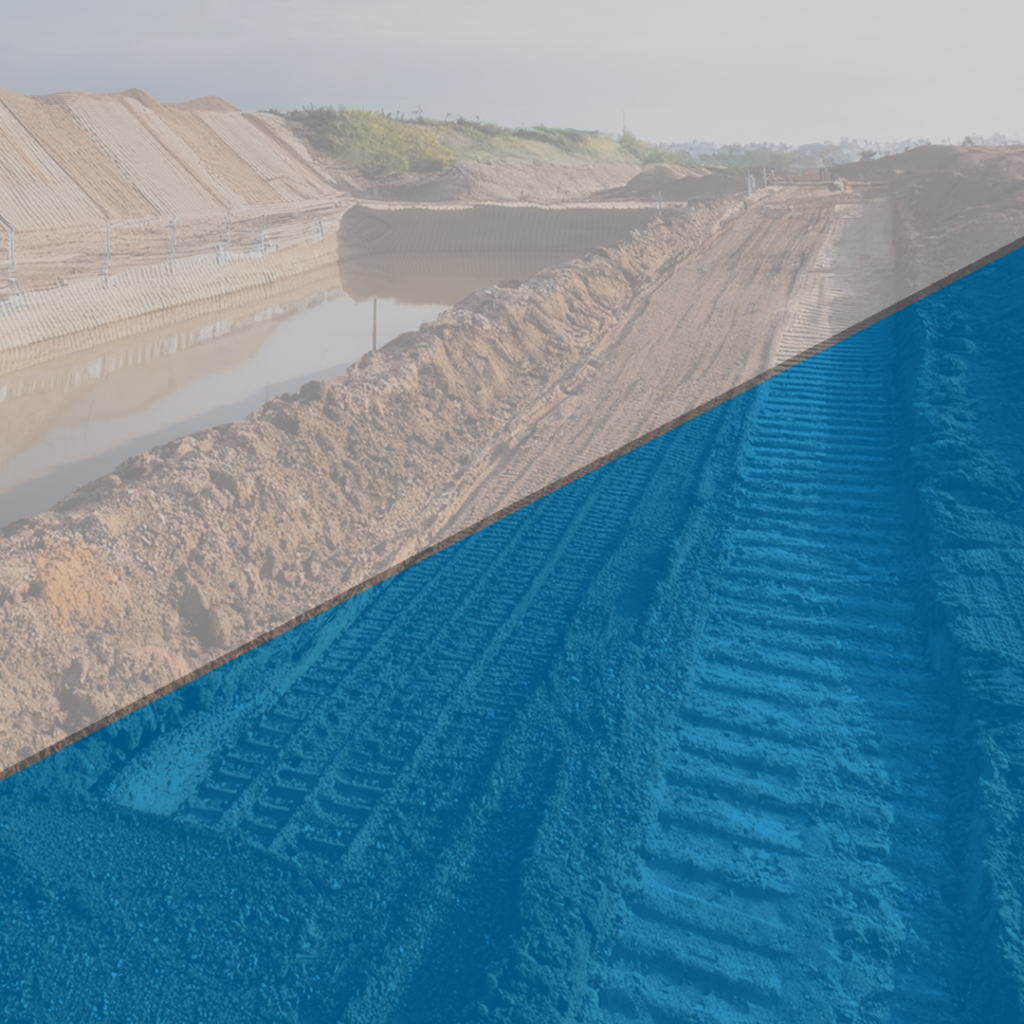How do site conditions impact selection of earth retaining structures like permanent site retaining walls? Understanding the design process and how gravity and cantilever systems work, we can now explore common site conditions and how these conditions impact wall type selection with consideration of design, construction and performance.
Site conditions consider the existing, proposed and adjacent natural, constructed and legal features of a project.
|
Common existing conditions include:
|
Common proposed conditions include:
|
The site selection and proposed site conditions are determined by multiple parties:
- An owner and/or architect select the use, location and aesthetic requirements.
- A site civil engineer determines site layout, grade breaks, drainage features and utilities.
- A geotechnical engineer determines on-site soil parameters, requirements for global stability and leads or supports wall design.
- A structural engineer leads or supports wall design and adjacent structure design requirements.
- Regulatory agencies and adjacent owners influence access, temporary easements and performance requirements.
Evaluating site conditions for wall type selection
Let’s consider the following representative site and development:

The deep excavation and large fill on site require earth retention, but what types are appropriate? We know from the previous blog post that the existing roadway and one of the proposed structures are in the influence zone of the proposed walls and there is a toe slope impacting the fill wall. A few questions to start with are:
- Who owns the road? This impacts temporary or permanent structure beneath the road as well as movement tolerance.
- Will the road be rebuilt as a part of the work? This impacts the option of open excavation versus shoring and the tolerances for movement/distress developing in the road.
- Can the subsurface structure be moved out of the influence zone? If the buildings can be “switched” then the subsurface structure also may reduce load on the fill wall.
- What is the future in front of the fill wall? Utility cuts should occur before wall construction. Maintenance of utilities or other future cuts may require a deeper wall foundation.
- Are there aesthetic requirements for the face of the fill wall? Facing costs and movement tolerance vary. While there is not a direct influence on the overall wall structure, this stage is often the most efficient to plan for the ultimate appearance of the wall.
- Can the site be graded to reduce the effective height of the fill wall? As shown in the previous blog post, eliminating the toe slope is desirable. Cross sloping the site or adding shorter walls to tier the site are also options.
Soil and rock conditions
The on-site soil and rock, as well as the proposed borrow materials, impact the loading, resistance, constructability and performance of the wall. Backfill or retained soils and their corresponding lateral earth pressures are generally the main loading. Foundation soils provide bearing resistance as well as frictional and passive resistance for the wall based on interface friction and embedment. Understanding the strength of the retained and foundation bearing soils is a key part of the geotechnical engineering of the wall system.
The impact of soils and rock on constructability and performance can be generally categorized by material type:
| Material Type | Design | Constructability | Performance |
| Clay (cohesive soils) | Strength varies over time. | Tends to be more stable in steep temporary cut conditions than granular materials. | Long-term settlement and potentially “delayed” loading must be accounted for. Lateral loads higher than granular soils. Wall drainage is critical. |
| Sands and gravels (granular soils) | Primarily frictional resistance. | Requires at least 1H:1V stable cuts to build wall and backfill. Sensitive to water. | Erosion protection (internal and external) must be detailed. |
| Rock | Additional design considerations of block failure, durability and weathering. | Strength and rock mass can impact drilling methods and excavation methods. Limits use of driven installation methods. Installation angle and bond zone for anchors/nails require additional considerations. | Fractured versus massive rock have different potential performance considerations. Drainage considerations for sedimentary rocks that are sensitive to long term water exposure. |
Looking ahead: practical application
In the next post in this series about earth retaining structures, we will select walls for our example site using the wall types from the first blog and the site selection considerations from this blog. Using the following information, who would you coordinate with and what do you think the reasonable wall types could be?
- Roadway – Municipal owner with municipal utilities beneath the road. Must remain in service and damage penalties exist if repairs are required.
- Building – Both Structures must stay as shown.
- Site – Fill wall will have a future roadway at the base of the wall.
- Soil conditions – Stiff clay for the upper 150 ft, ground water encountered below deepest basement elevation.
Check out our previous blogs about geostructural design to aid in your assessment.
This is the second post in our third series about geostructural design.
Read the previous parts for more information.
Series 3 – Earth Retaining Systems:
Part 1: Earth Retaining Structures: Who Designs Them… and How Do They Work?
Part 3: Coming Soon
Series 2 – Contractor Delegated Design:
Part 1: What Is Contractor Delegated Design?
Part 2: Delegated Design Benefits, Risks and Pitfalls
Part 3: Bridging the Gap for Delegated Design
Series 1 – Geostructural Design:
Part 1: What Is Geostructural Design?
Part 2: Unique Aspects of Geostructural Design
Part 3: Why Hire a Geostructural Design Consultant
ABOUT THE EXPERT
Noel William Janacek serves as a geostructural principal for ECS. He has extensive experience in geotechnical and structural assessment and design. Mr. Janacek’s areas of expertise include design, assessment, stabilization and asset management for earth retention systems as well as ground improvement, underpinning and deep-foundation design. He has served as a technical lead in multiple design-build projects, design engineer of record, owner’s reviewer, expert witness and resident engineer for construction.
ECS’ geostructural design practice is staffed by expert consultants prepared to support clients with challenging projects. Contact us to schedule an initial consultation.
SHARE THIS POST

